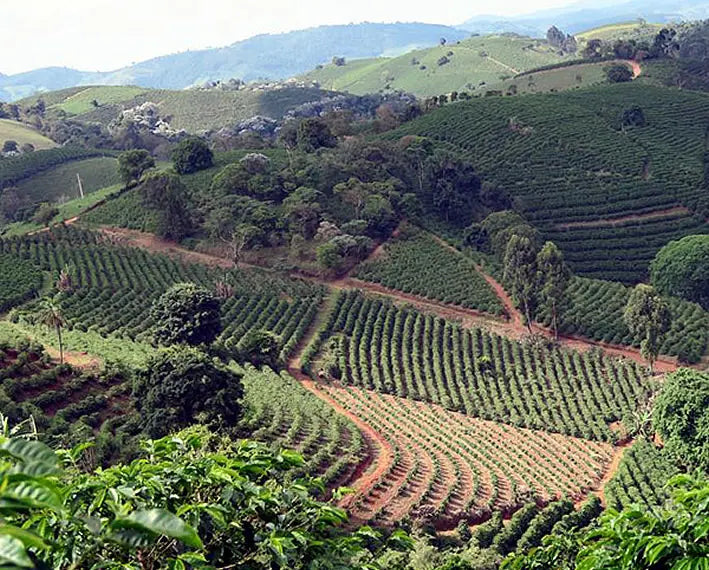Some would say that Brazil plays the starring role in the world of coffee. In fact, Brazil is the driver of the world’s coffee commodity market. That says a lot about the importance of the country as a major exporter of coffee.
Brazil Yields to No One
Brazil is a very large country. In fact, it’s the fifth largest country in the world in land mass. It’s the largest coffee producing country in the world, producing 63 million bags of coffee in 2020. Whereas the next largest producing country, Vietnam, produced 29 million bags. Coffee is grown all over the country and has 14 different growing regions, with Minas Gerais producing most of the specialty coffee. But, how did those beans get to Brazil in the first place?
History of Coffee in Brazil
The first coffee trees were planted in the 1720’s. According to the legend, the Portuguese wanted to get into the growing coffee market. The French were growing coffee in neighboring French Guiana, but they were unwilling to share. A guy named Palheta was sent to French Guiana on a diplomatic mission to resolve a border dispute. He seduced the governor’s wife who gave him a parting gift of flowers as he was prepared to return home. Secretly stashed inside the bouquet were coffee seeds.
How Brazil Impacts the Futures Market
To give a simplistic overview, the US Coffee Futures Market is what dictates the price of the vast majority of the world’s coffee. As of late, it has been on a roller coaster ride with nearly daily ups and downs. Because Brazil produces the most coffee, it controls the futures market. The spike in the market was largely caused by a frost in Brazil that negatively affected the yield. With a lower projected yield (supply), the demand for the existing coffee and projected future coffee increased. Ah, economics 101 at work. But, with all the power Brazil wields in setting the price of coffee world-wide, the quality of the coffee and the environmental impact is another story.
Environmental Demands
 As the American and European demand for coffee grew, so did the need for people to pick it. The early coffee industry was dependent on slaves. In fact, during the first half of the 19th century 1.5 million slaves were imported to work picking and processing coffee. Brazil still produces the majority of the world’s coffee, but now employs mechanical picking and processing machines for the majority of the production. Mechanical pickers work best on flat, well organized pieces of land. As the coffee market increased, more and more land was clear cut to plant coffee trees. Coffee needs lots of water and fertilizer to increase yield. Without the cover of taller tree canopy and natural tree decay to provide shade, nutrients and trap moisture, irrigation and fertilizer are heavily used to meet yield expectations. Of course, there are producers who understand sustainability and strive to protect the environment.
As the American and European demand for coffee grew, so did the need for people to pick it. The early coffee industry was dependent on slaves. In fact, during the first half of the 19th century 1.5 million slaves were imported to work picking and processing coffee. Brazil still produces the majority of the world’s coffee, but now employs mechanical picking and processing machines for the majority of the production. Mechanical pickers work best on flat, well organized pieces of land. As the coffee market increased, more and more land was clear cut to plant coffee trees. Coffee needs lots of water and fertilizer to increase yield. Without the cover of taller tree canopy and natural tree decay to provide shade, nutrients and trap moisture, irrigation and fertilizer are heavily used to meet yield expectations. Of course, there are producers who understand sustainability and strive to protect the environment.
What Makes Brazil Coffee Unique
While Brazil sits in the driver’s seat of the world coffee market, it does not produce much specialty coffee. Only 20% of the coffee produced is considered specialty, mainly grown in the Minas Gerais region in the south. Brazil introduced a unique way of processing the coffee cherry. About 25 years ago, the Pulp Natural processing method was introduced. (It is an early version of the Honey process.) The skin of the fruit is removed, but the pulp is dried on the seed. This imparts a fruity quality to the beans. We were originally drawn to Brazilian coffees for this very flavor. We have historically roasted Brazil to a french level. The beans are dense and can take more heat. The fruity flavor also deepens with the dark profile, creating a complex, rich flavor.


